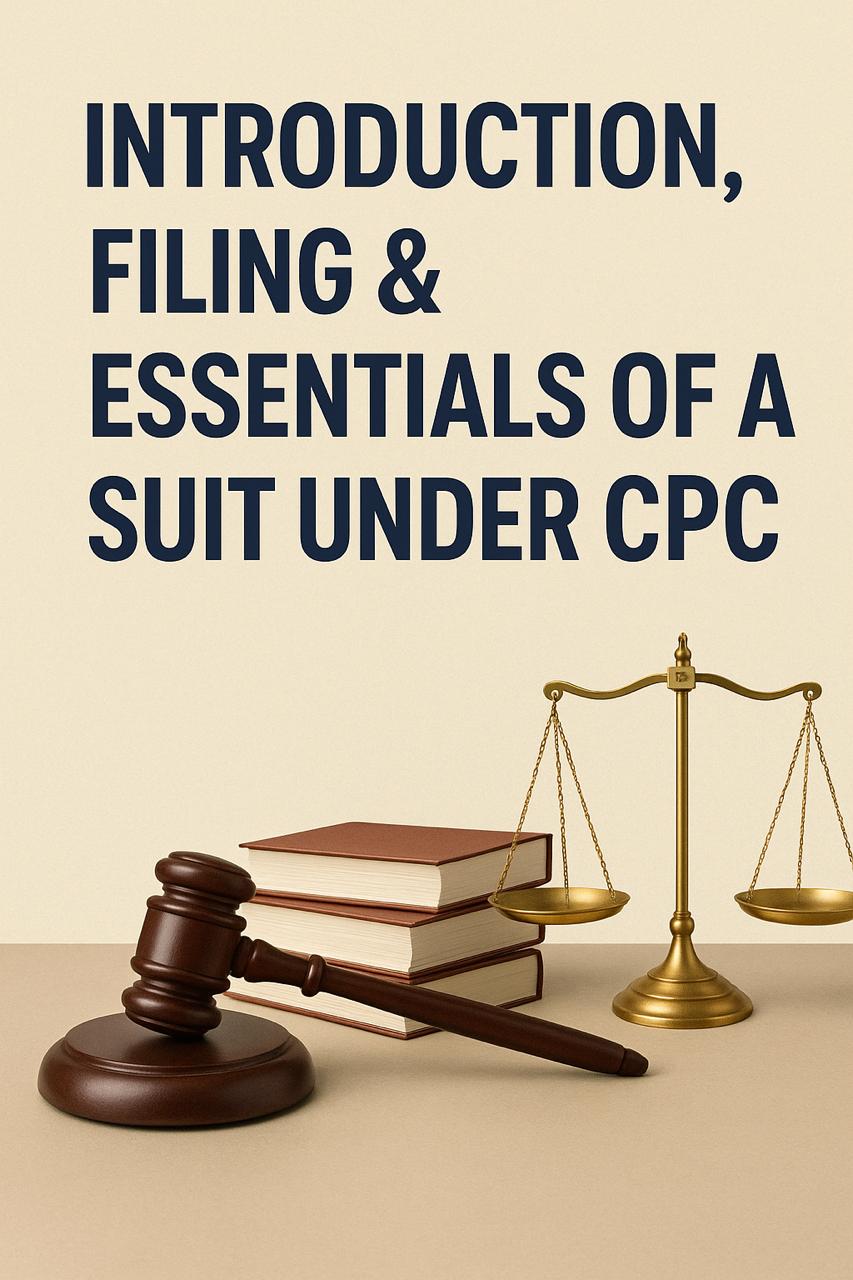 Introduction, Filing, and Essentials of a Suit under CPC
Introduction, Filing, and Essentials of a Suit under CPC
Introduction
In Indian law, legislation is broadly divided into two categories:
1. Substantive Law – Determines the rights and liabilities of parties.
• Examples: Indian Contract Act, Transfer of Property Act, Law of Torts, Bharatiya Nyaya Sanhita (BNS).
2. Adjective or Procedural Law – Prescribes the procedure and machinery for enforcing those rights and liabilities.
• Examples: Bharatiya Sakshya Adhiniyam (BSA), Limitation Act, Code of Civil Procedure (CPC), Bharatiya Nagarik Suraksha Sanhita (BNSS).
Maxim: Ubi jus ibi remedium – “Where there is a right, there is a remedy.”
Application in Indian Law
• Substantive law creates legal rights.
• Remedies for violation include compensation or injunction.
• Procedural law (like CPC) provides the mechanism to enforce these rights.
• CPC itself does not create rights but offers the forum and procedure to claim them.
Case Reference: Ghanshyam Dass v. Dominion of India (AIR 1984 SC 1004) – Procedural law breathes life into substantive rights.
Role and Scope of the CPC
• Enacted: 21 March 1908
• Commencement: 1 January 1909
• First CPC: 1859, revised in 1861, 1877, 1879, and 1882.
• Extent: Applies to the whole of India except Nagaland and tribal areas.
CPC’s Complementary Role:
Where substantive law grants rights, CPC provides the procedure to enforce them. The maxim ubi jus ibi remedium becomes meaningful only with an effective procedure.
Scope:
• CPC is exhaustive in matters it covers.
• Where silent, courts use inherent powers under Section 151 CPC to ensure justice.
• Case Reference: Manohar Lal Chopra v. Seth Hiralal (1962) – Courts can act to meet the ends of justice when the Code is silent.
Object and Structure of the CPC
Object:To consolidate and amend the laws relating to the procedure of civil courts.
Scheme of the Code:
• Body: 158 sections – general principles.
• Schedule 1: 51 Orders & Rules – detailed procedures.
• Longest Order: Order 21 with 106 rules.
Amendments:
• 1976, 1999, 2002, and 2015 – to keep the law in line with social and technological changes.
Important Stages of a Civil Suit
1. Presentation of plaint
2. Service of summons
3. Appearance of parties
4. Ex-parte decree
5. Interlocutory proceedings
6. Filing of written statement
7. Production of documents
8. Examination of parties
9. Discovery and inspection
10. Admission
11. Framing of issues
12. Summoning witnesses
13. Hearing & examination
14. Arguments
15. Judgment
16. Preparation of decree
17. Appeal, review, revision
18. Execution of decree
Procedure Before Filing a Suit
Before filing, check:
1. If the case is of civil nature (Sec. 9 CPC).
2. Res sub judice – Whether a similar case is pending (Sec. 10 CPC).
3. Res judicata – Whether already decided (Sec. 11 CPC).
4. Limitation – Whether within the time limit.
5. Order 2 Rule 2 CPC – Relief not claimed earlier.
6. Order 9 Rule 9 CPC – Bar against re-filing dismissed suit.
Filing Procedure of a Suit
Documents Required:
1. Case Information Format (Index)
2. Memo of Parties
3. Plaint
4. Affidavit in Support of Plaint
5. Interim Applications (if any)
6. Affidavit in Support of Application
7. Address Form
8. List of Documents with annexures
9. Vakalatnama (if through advocate)
10. Second Set of Plaint for service on opposite party
∆ Below are the pictures of documents used while filling a plaint
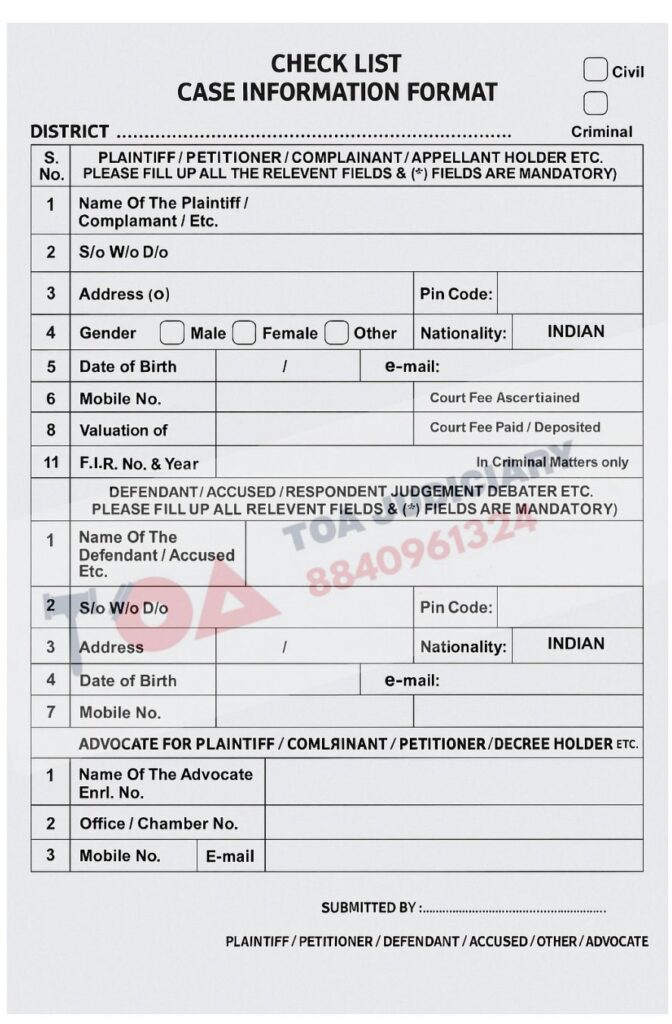
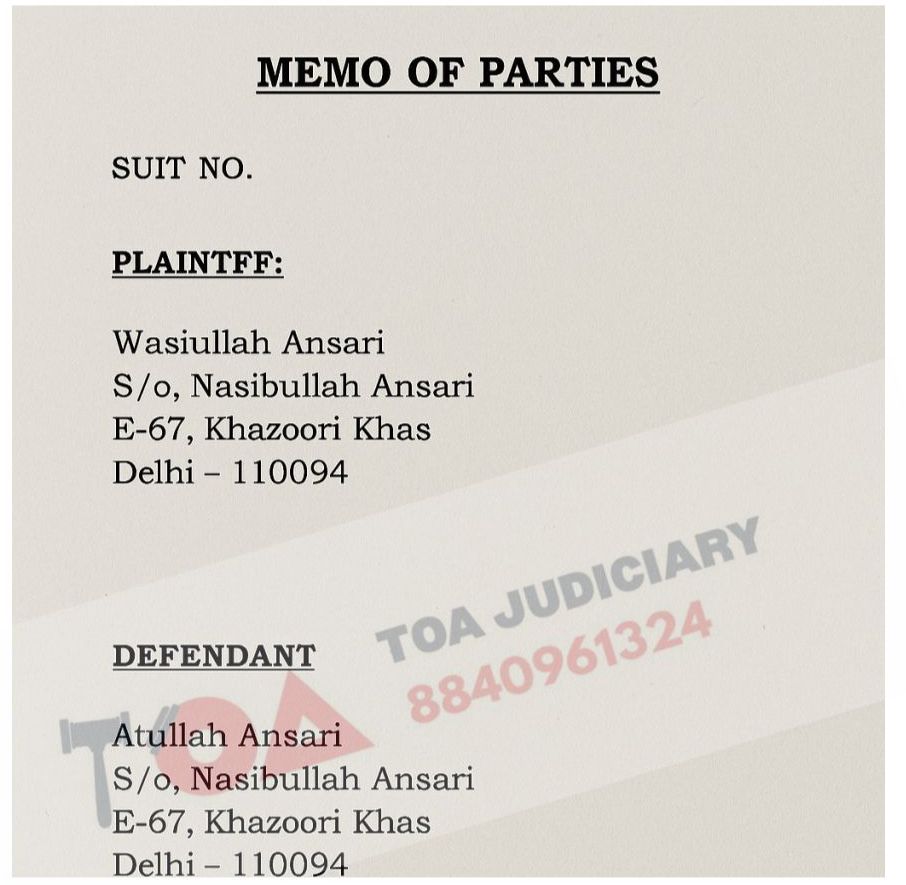
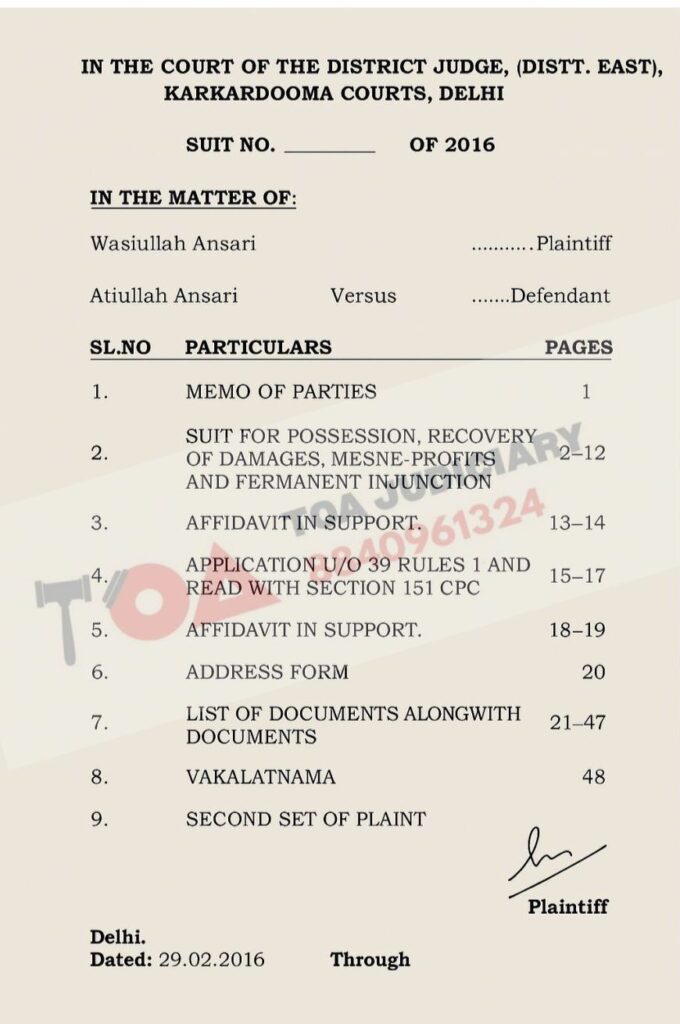
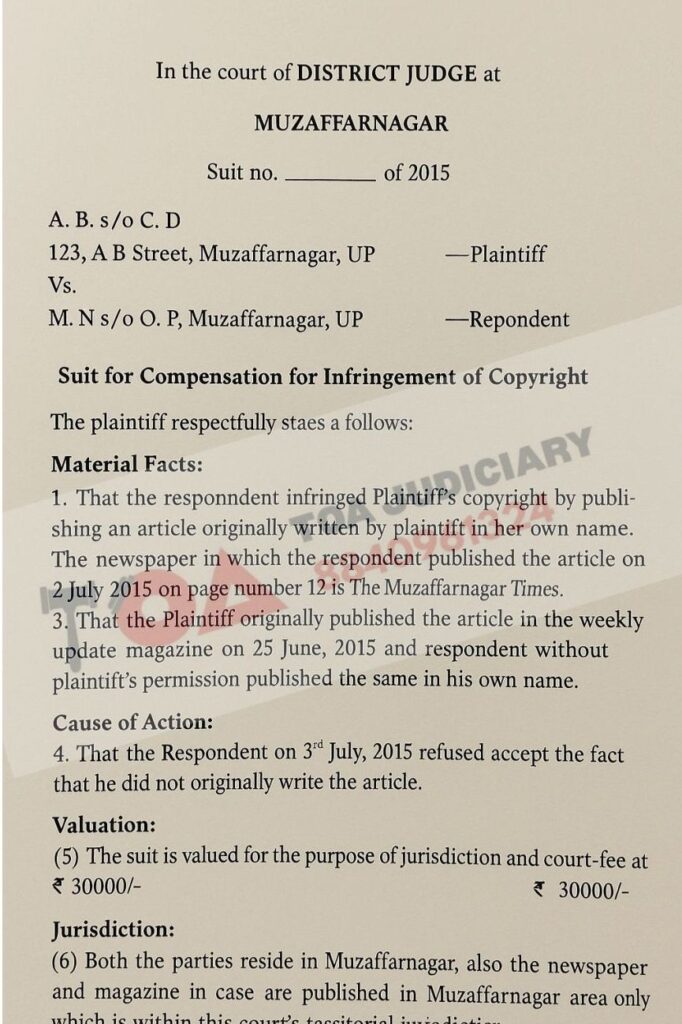
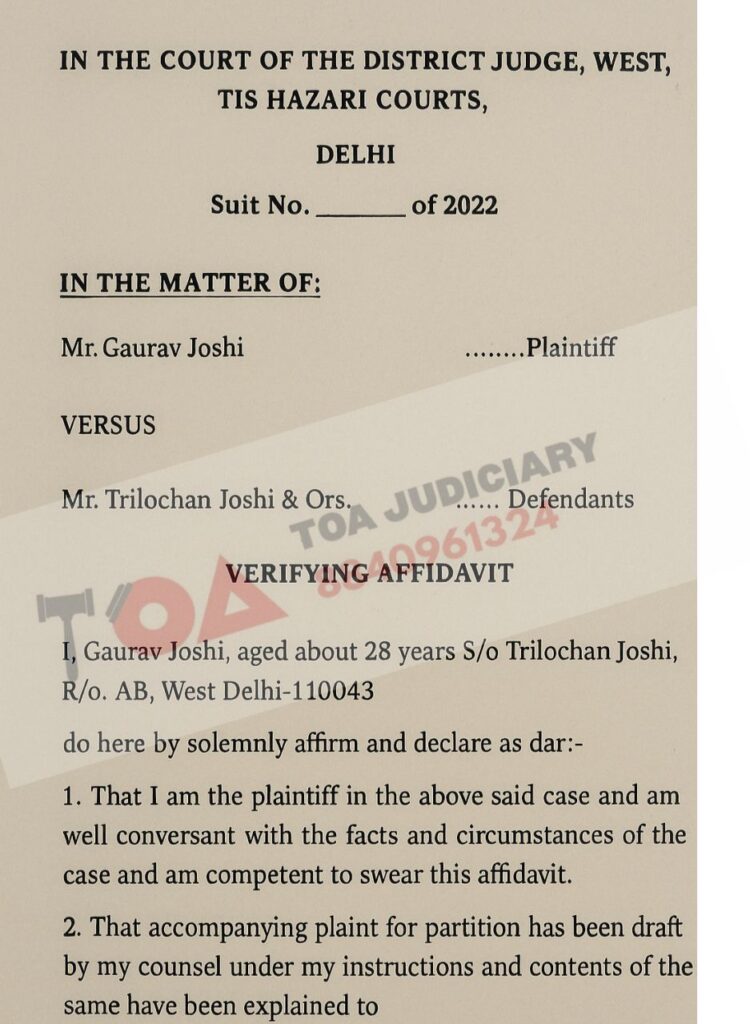
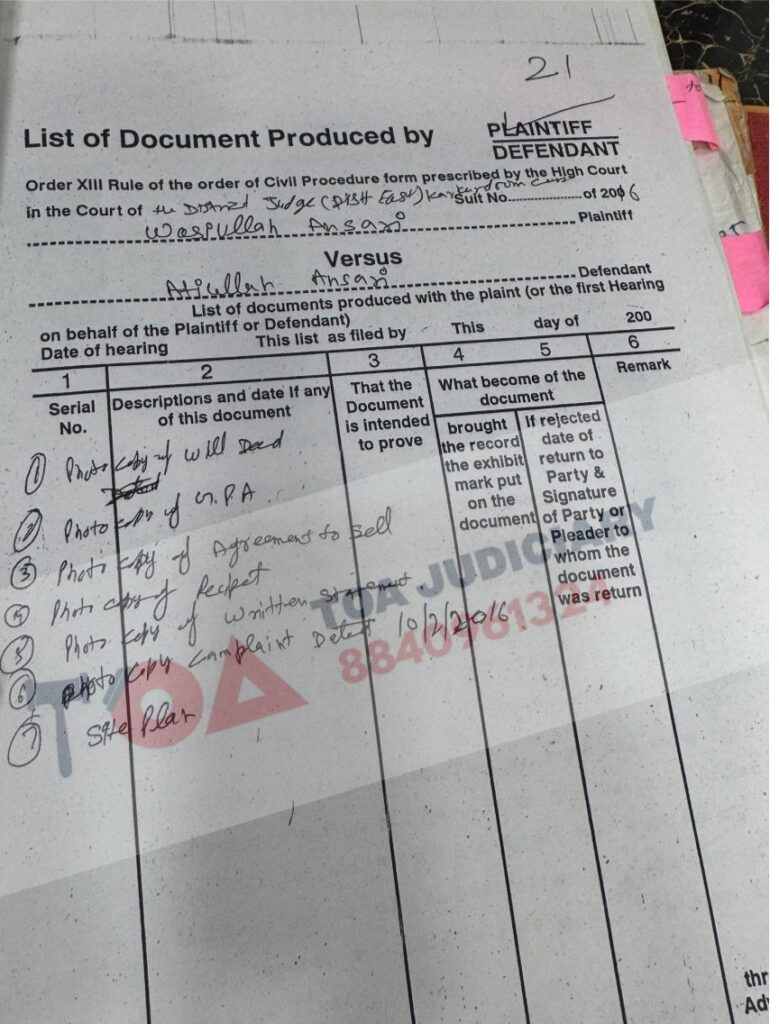
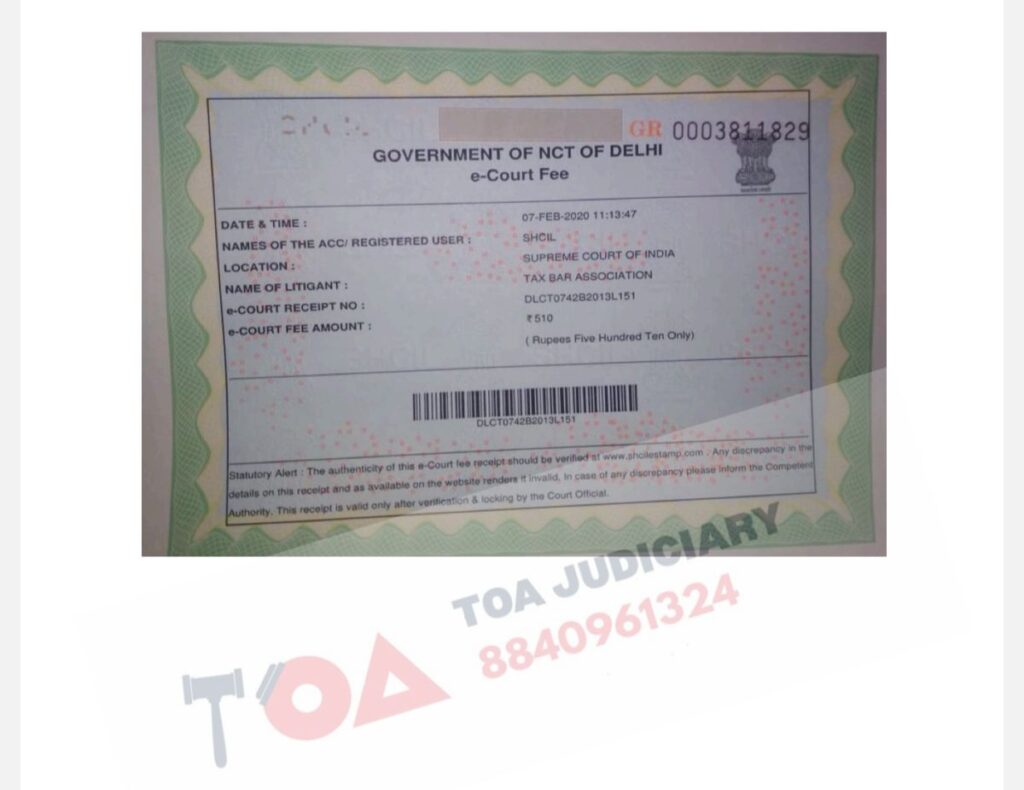
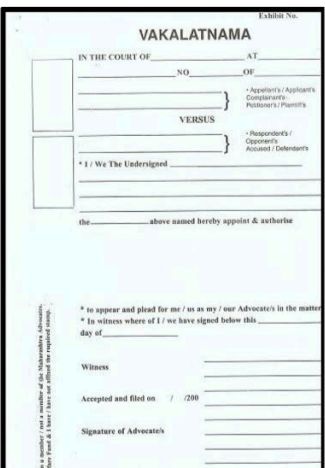
Essentials of a Suit
As per Section 26 CPC, a suit is instituted by presentation of a plaint.
1. Cause of Action
A combination of a legal right + its violation.
• Without cause of action → plaint rejected under Order 7 Rule 11 CPC.
• Burden of proof lies on the plaintiff.
Example:
• Loan not repaid or breach of contract → Cause of action arises when the right is violated.
2. Subject Matter of Suit
The actual thing or right in dispute.
• Proprietary (property-related)
• Personal (personal rights like contract, divorce, defamation).
3. Parties to a Suit
a. Joinder of Plaintiffs (Order 1 Rule 1) – Multiple plaintiffs allowed if:
1. Same act/transaction, and
2. Common question of law/fact.
b. Joinder of Defendants (Order 1 Rule 3) – Multiple defendants allowed if:
1. Right to relief arises from same act, and
2. Common question of law/fact.
c. Necessary and Proper Parties:
• Necessary Party – Without whom no effective decree can be passed.
• Proper Party – Not essential but aids in complete adjudication.
d. Pro Forma Defendant:
Added formally without claiming relief against them but necessary for proper decision.
4. Relief
The remedy claimed in the suit (damages, injunction, specific performance).
Affidavit with Pleadings – Mandatory
Section 26 CPC mandates that facts in plaint must be proved by affidavit.
Case Reference: Salem Advocates Bar Association v. Union of India (2005) – Affidavits prevent false claims, save judicial time, and ensure responsibility.
Conclusion
The CPC is the backbone of civil justice in India, ensuring that substantive rights are not mere paper declarations but can be effectively enforced. Understanding introduction, filing, and essentials of a suit is crucial for law students, advocates, and judiciary aspirants to navigate civil litigation effectively.
✓ To start your preparation for Judicial Services Examination at home, drop a message on WhatsApp +91 8840961324 or call us on +91 9151591324
At Theory of Abrogation, we equip you with everything you need:
•Subject-wise expert classes
•Mock test series
•Legal current affairs
•Personalized mentorship for interview preparation“Your law degree is your foundation, but your preparation is what will build your success.”
Join Our New Batch Now!
Prepare smart. Prepare with Theory of Abrogation.
Contact Us:
B-109, Commercial
Complex Dr. Mukherjee
Nagar, Delhi-09
+91 9971399324 | +91 8840961324
[email protected]
